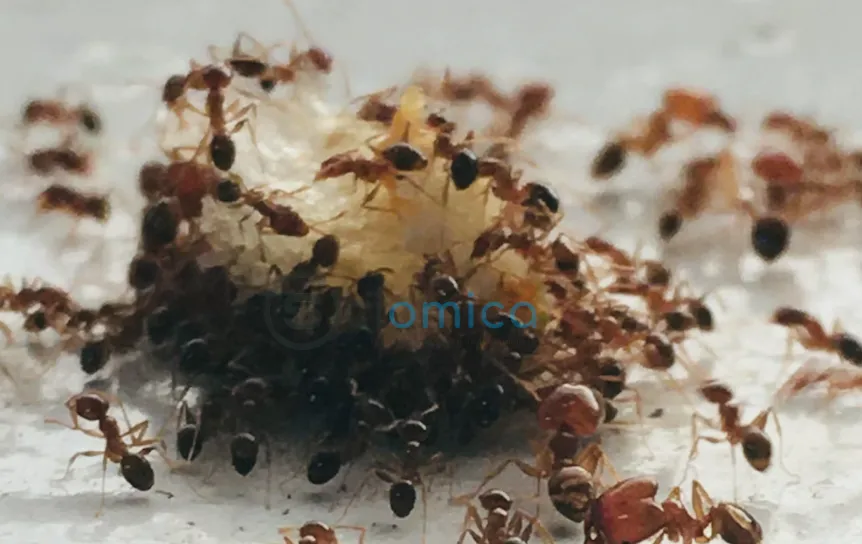
In a fascinating overlap of biological and social systems, researchers have illuminated the complex social structure and genetic regulation among leafcutter ants, specifically the species Atta cephalotes. Led by Shelley Berger from the University of Pennsylvania, the study reveals that the intricate division of labor among these ants is encoded in their genetic makeup, with specific roles dictated by their physical attributes.
In the colony hierarchy, Major ants serve as guards, preventing intruders from breaching their territory, while the Media ants are responsible for gathering plant material—leaf fragments—to support the Minima ants, whose roles involve caring for the young and maintaining the colony’s fungal culture. At the most fundamental level, the Minima ants undertake cleaning duties and nurturing the brood.
The groundbreaking research identified two key signaling molecules that play a pivotal role in defining these tasks. Crustacean cardioactive peptide (CCAP) is predominantly found in Media ants and drives their leaf-harvesting activities. Conversely, Neuroparsin-A (NPA) is enriched in Major ants, inhibiting their caregiving capacities while promoting defensive behaviors. Adjusting the levels of these neuropeptides can effectively reprogram the ants’ roles within the colony, a discovery that highlights the profound impact of neuropeptides on behavior.
The findings, published in the journal Cell, reveal an unexpected parallel in the gene-expression patterns of leafcutter ants and eusocial naked mole-rats—mammals known for their cooperative brood care—that evolved from a common ancestor over 600 million years ago. Berger expressed astonishment at this similarity, suggesting that the regulation of behavior via neuropeptides might also extend to human social behaviors, despite the complexities inherent in human biology.
Building on previous work with carpenter ants, which display a simpler social structure with only two roles—forager and soldier—the research team developed advanced 3D-printed behavioral models that allowed meticulous observation of ant interactions with their environment. This setup enabled researchers to assess how variations in CCAP and NPA levels prompted significant behavioral changes among the ants.
Notably, the research delves into evolutionary implications by comparing leafcutter ants to naked mole-rats, revealing a striking parallel in the recruitment of molecular mechanisms that manage foraging and caregiving roles in both species. While naked mole-rats lack specific neuropeptides like NPA, it is believed that certain more conserved receptors might activate analogous pathways across the two groups.
Adding an intriguing dimension to their findings, the researchers also uncovered connections between insulin regulatory pathways and maternal caregiving behaviors in both species. The alignment of insulin-like peptides with NPA suggests a previously overlooked interplay between neuropeptide signaling and insulin regulation, raising questions about how insulin-related disorders could influence caregiving behaviors in mammals, including humans.
As the research progresses, Berger’s team is keen to explore the enduring nature of biological plasticity related to behavior and lifespan. Their interest in examining how reproductive roles influence longevity in ant queens compared to worker ants may provide deeper insights into the connections between behavior and lifespan across species.
Through this interdisciplinary study, the researchers contribute a vital understanding of social structure and genetic regulation, potentially paving the way for future investigations into behavior, evolution, and even health implications linked to these findings. The collaborative nature of this study reflects the convergence of knowledge across fields, enhancing our comprehension of the fascinating world of social organization in both ant and mammalian societies.
Reference:
- Michael B. Gilbert, Karl M. Glastad, Maxxum Fioriti, Matan Sorek, Tierney Scarpa, Freddy S. Purnell, Daniel Xu, Lindsay K. Pino, Anatoly Korotkov, Ali Biashad, Josue Baeza, Richard Lauman, Anastasiia Filippova, Balint Z. Kacsoh, Roberto Bonasio, Mackenzie W. Mathis, Benjamin A. Garcia, Andrei Seluanov, Vera Gorbunova, Shelley L. Berger. Neuropeptides specify and reprogram division of labor in the leafcutter ant Atta cephalotes. Cell, 2025; DOI: 10.1016/j.cell.2025.05.023






